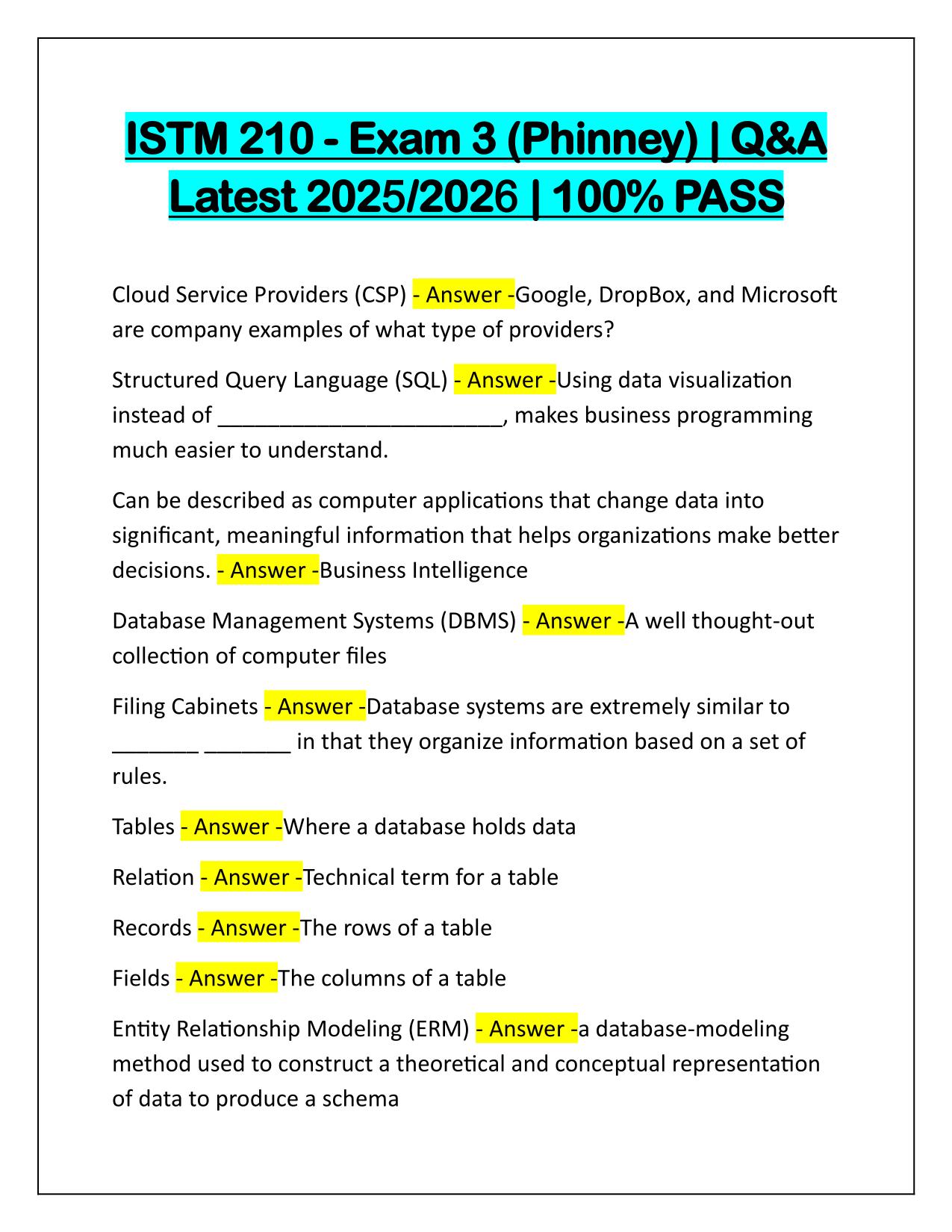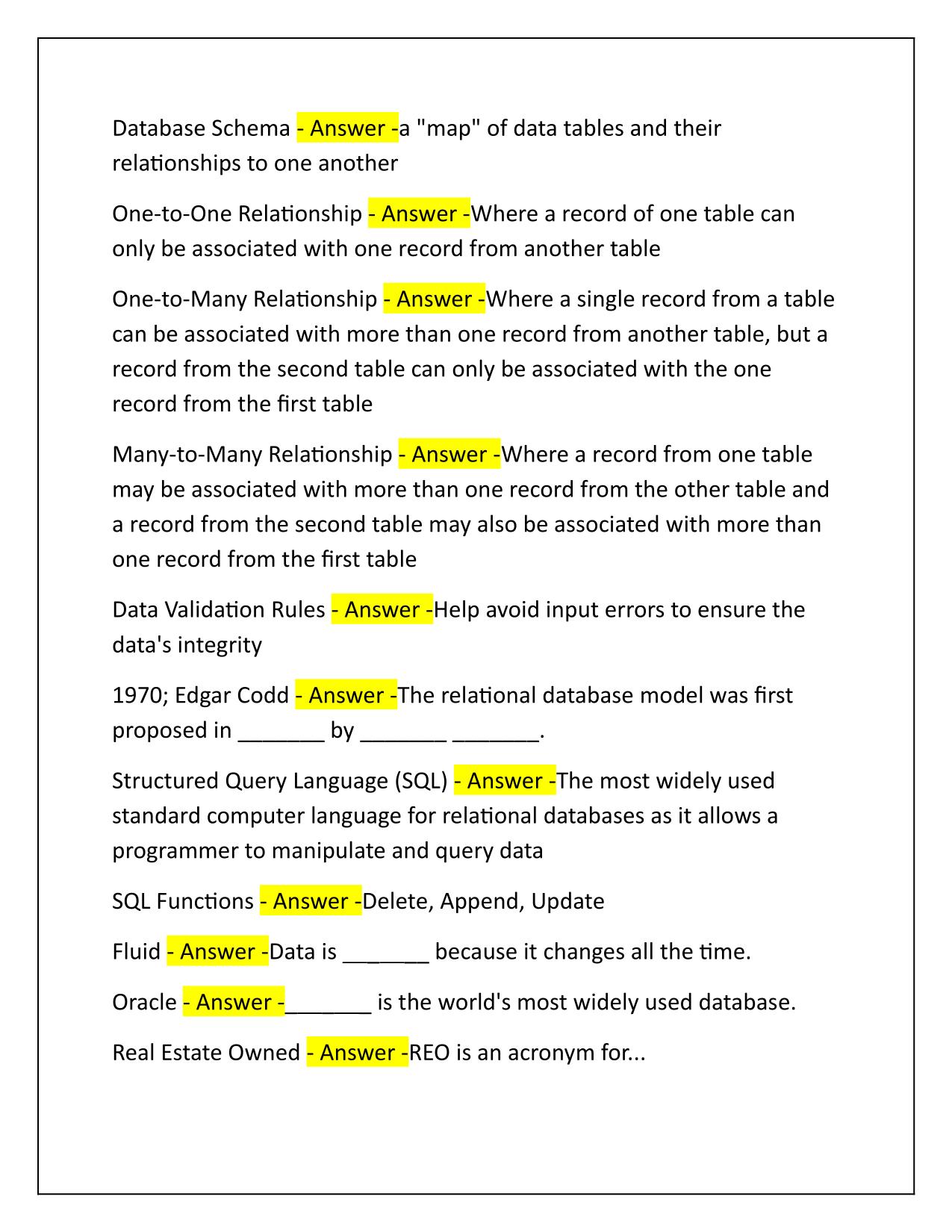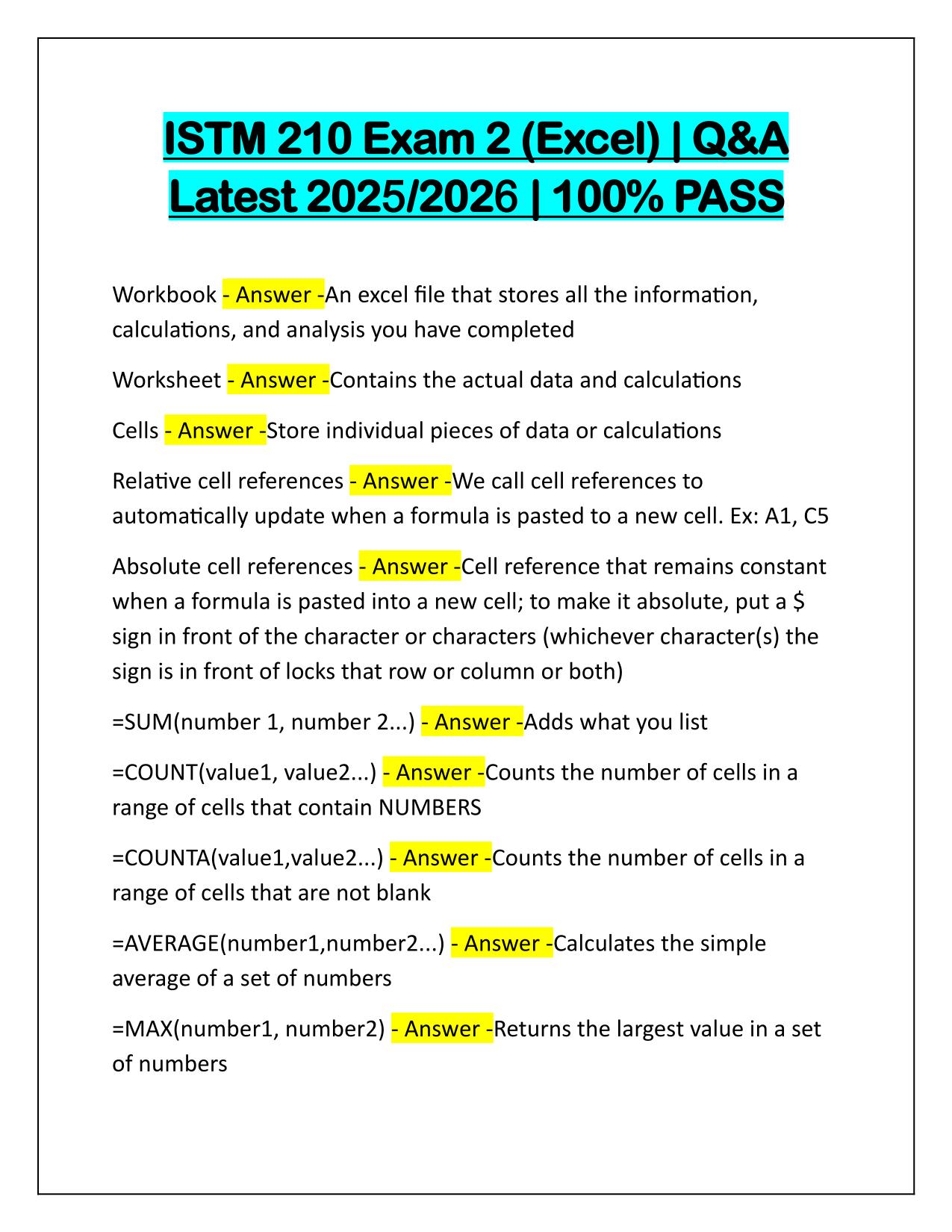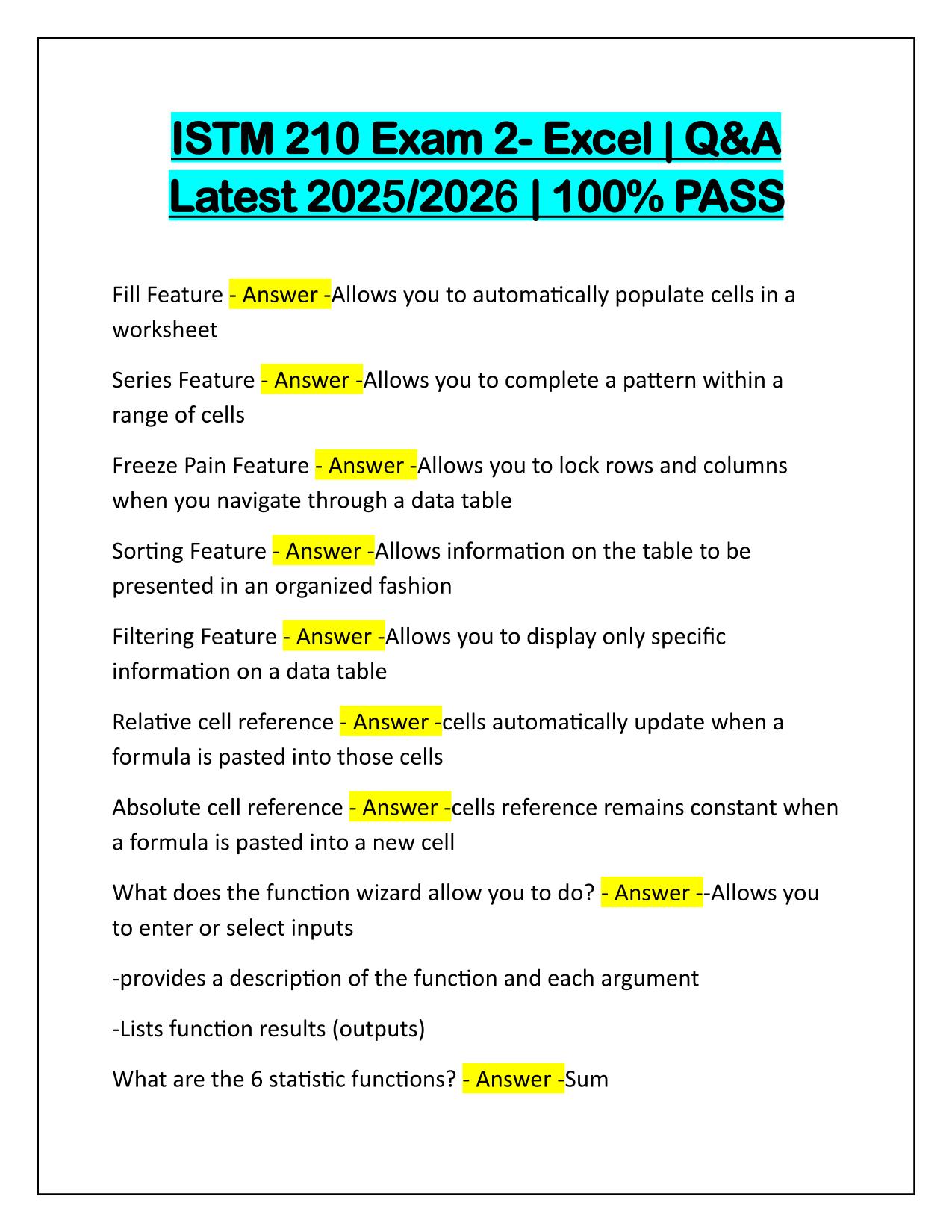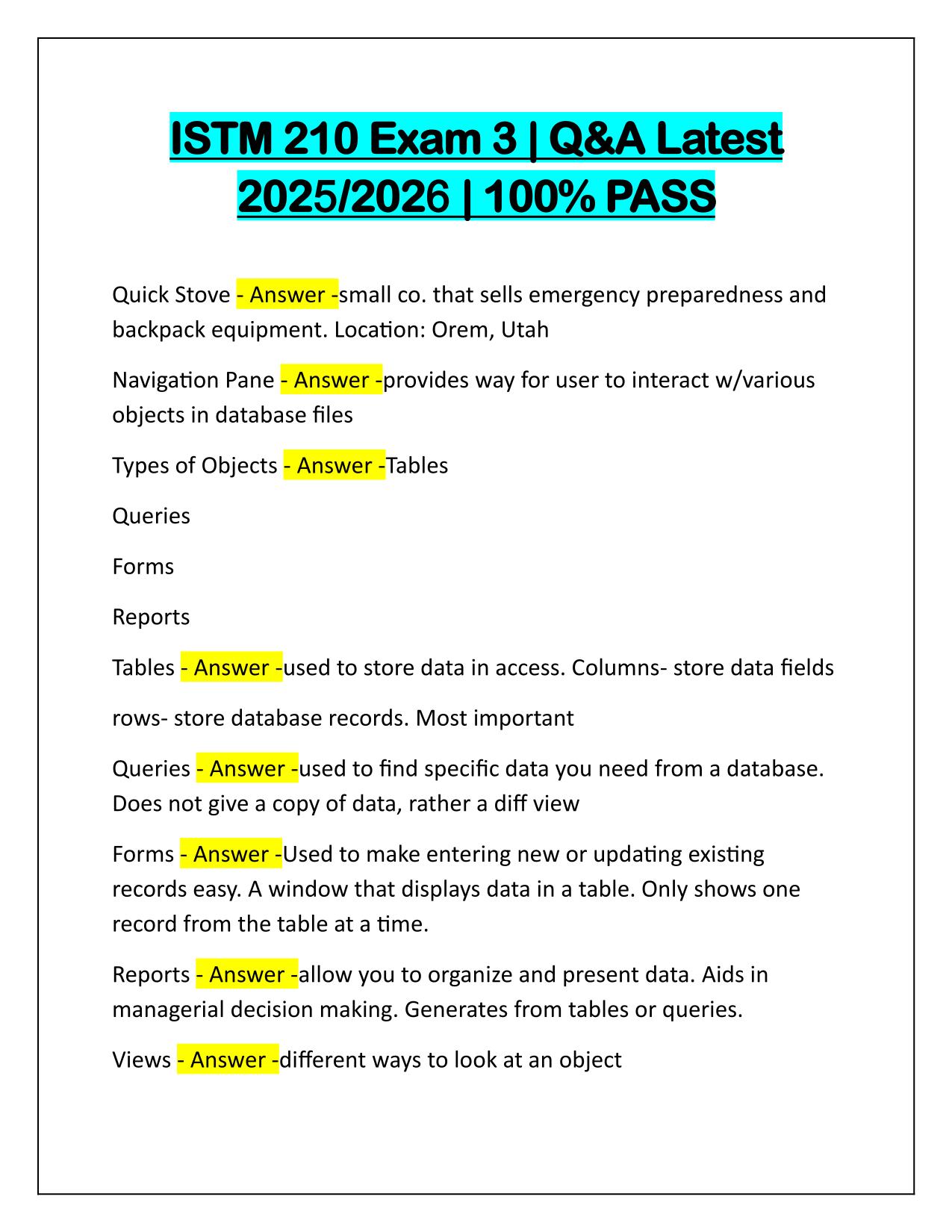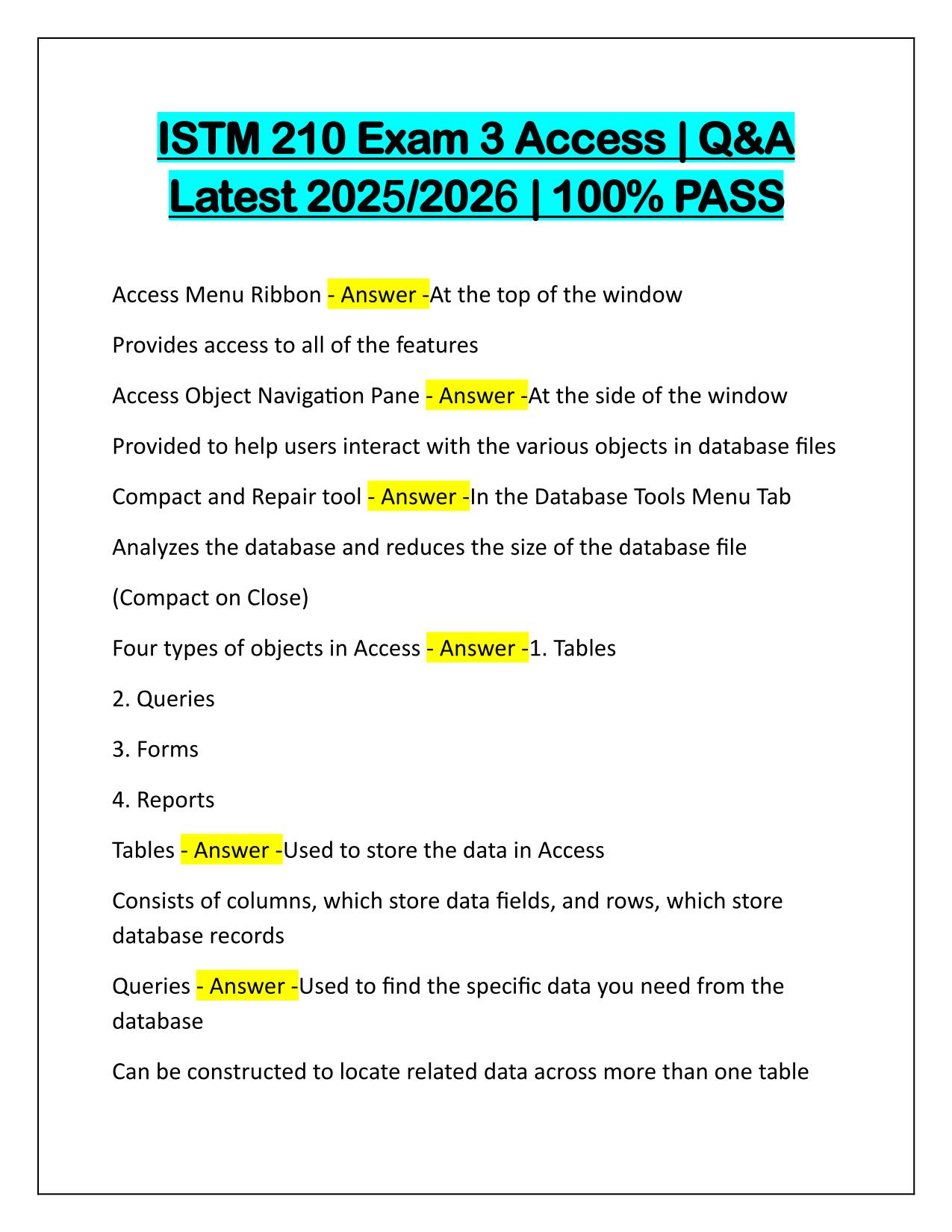ISTM 210-Exam 3 (Phinney) Correctly Answered Latest Update
Course:
ISTM 210
Institution:
ISTM 210
ISTM 210-Exam 3 (Phinney) Correctly Answered Latest Update
After purchase, you get:
✅ Instant PDF Download
✅ Verified answer explanations
✅ Refund if not Satisfied
✅ Prepared for 2025/2026 test cycle
Document Information
| Uploaded on: | May 5, 2025 |
| Last updated: | May 5, 2025 |
| Number of pages: | 31 |
| Written in: | 2025/2026 |
| Type: | Exam (elaborations) |
| Contains: | Questions & Answers |
| Tags: | ISTM 210-Exam 3 (Phinney) Correctly Answered Latest Update |
Seller Information

AdelineJean
User Reviews (0)
Exam (Elaborations)
$10.00
Bundle Deal! Get all 16 docs for just $29.99
Add to Cart
100% satisfaction guarantee
Refund Upon dissatisfaction
Immediately available after purchase
Available in Both online and PDF
$10.00
| 0 sold
Related Documents
Available in a Bundle
Content Preview
ISTM 210 - Exam 3 (Phinney) | Q&A Latest 2025/2026 | 100% PASS Cloud Service Providers (CSP) - Answer -Google, DropBox, and Microsoft are company examples of what type of providers? Structured Query Language (SQL) - Answer -Using data visualization instead of _______________________, makes business programming much easier to understand. Can be described as computer applications that change data into significant, meaningful information that helps organizations make better decisions. - Answer -Business Intelligence Database Management Systems (DBMS) - Answer -A well thought-out collection of computer files Filing Cabinets - Answer -Database systems are extremely similar to _______ _______ in that they organize information based on a set of rules. Tables - Answer -Where a database holds data Relation - Answer -Technical term for a table Records - Answer -The rows of a table Fields - Answer -The columns of a table Entity Relationship Modeling (ERM) - Answer -a database-modeling method used to construct a theoretical and conceptual representation of data to produce a schema
